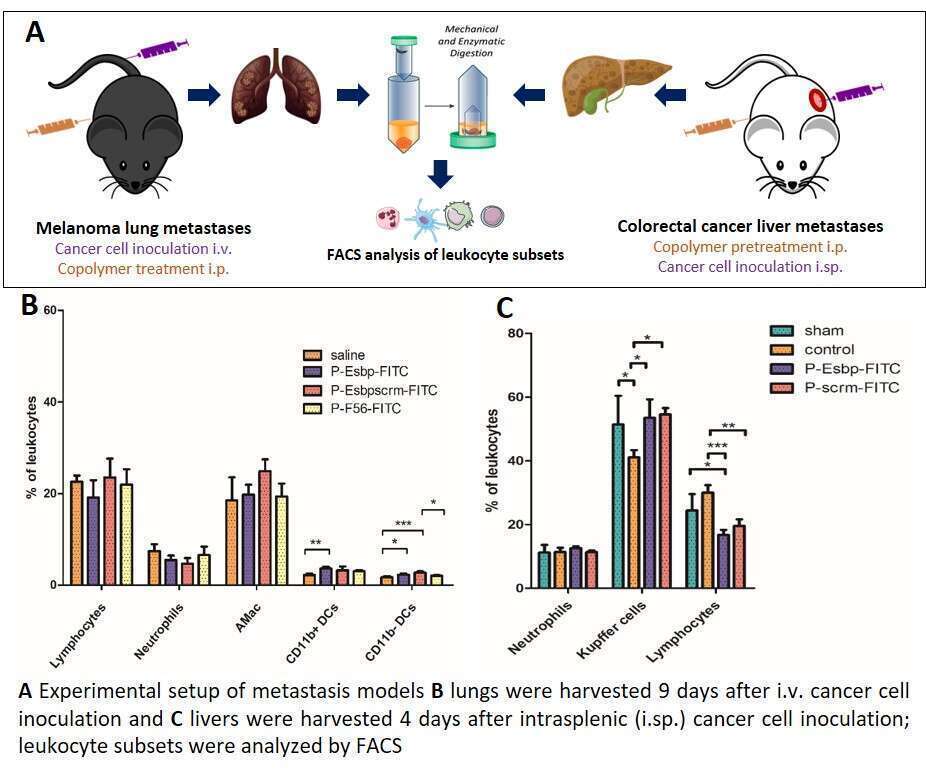
Drug-free polymer-peptide conjugates for attenuation of pro-inflammatory leukocyte recruitment to the metastatic tumor microenvironment
Most cancer-related deaths are a result of metastasis, and treatment of metastases remains a major challenge for cancer therapy. In recent years, several strategic molecules have been identified to mediate crucial steps of the metastatic cascade, including the extravasation of circulating tumor cells (CTCs) and the recruitment of pro-inflammatory leukocytes. Novel treatments are needed to target these molecules to attenuate metastatic outgrowth of tumors.
The endothelial cell adhesion molecule E-selectin was shown to be exclusively expressed in the proximity of inflamed tissues, and is associated with leukocyte and CTC adhesion, mediating their tissue infiltration. Previously, we have reported that preventive treatment with a novel N-(2-hydroxypropyl) methacrylamide (HPMA)-based polymer-peptide conjugate, containing multiple copies of a high affinity E-selectin-binding peptide (P-Esbp), is able to inhibit the formation of lung metastases in a murine melanoma model [1]. Therefore, we have designed further HPMA-based copolymers conjugated to multiple copies of short peptides, such as the VEGFR1-binding peptide F56, or the CCR2-binding peptide ECL1i, since the targeted receptors VEGFR1 and CCR2 were shown to mediate pro-inflammatory cell migration to the metastatic site [2,3]. We are evaluating the ability of these copolymers to inhibit the infiltration of different leukocyte subsets to metastatic tissues.
In two experimental models of melanoma lung metastasis and colorectal cancer liver metastasis, we have found a reduction of lymphocyte infiltration into metastatic organs upon preventive or therapeutic treatments with P-Esbp. We are currently evaluating the effects of other copolymers on these subsets, which remain to be characterized in greater detail.
The synthesized copolymers lack any conventional anti-cancer drug and are not expected to show adverse effects commonly accompanying chemotherapy. We anticipate that our conjugates depict a safe and specific treatment option for the long-term prevention of metastasis.
[1] Shamay, Y. et al. Journal of Controlled Release 217 (2015): 102-112.
[2] Kaplan, R. N., et al. Nature 438.7069 (2005): 820.
[3] Qian, B. et al. Nature 475.7355 (2011): 222-225.

Powered by Eventact EMS